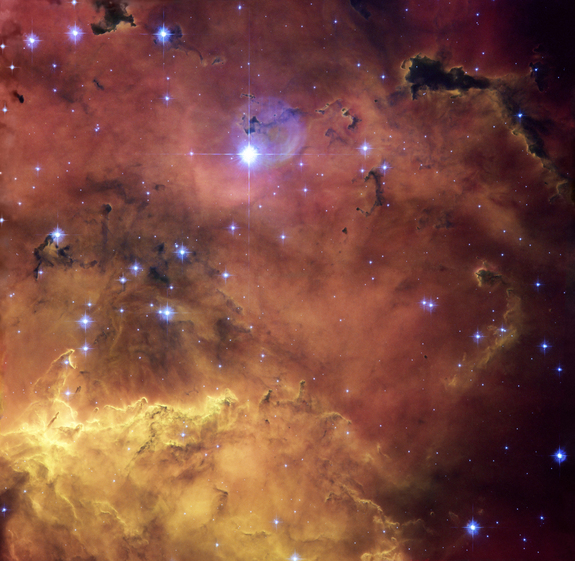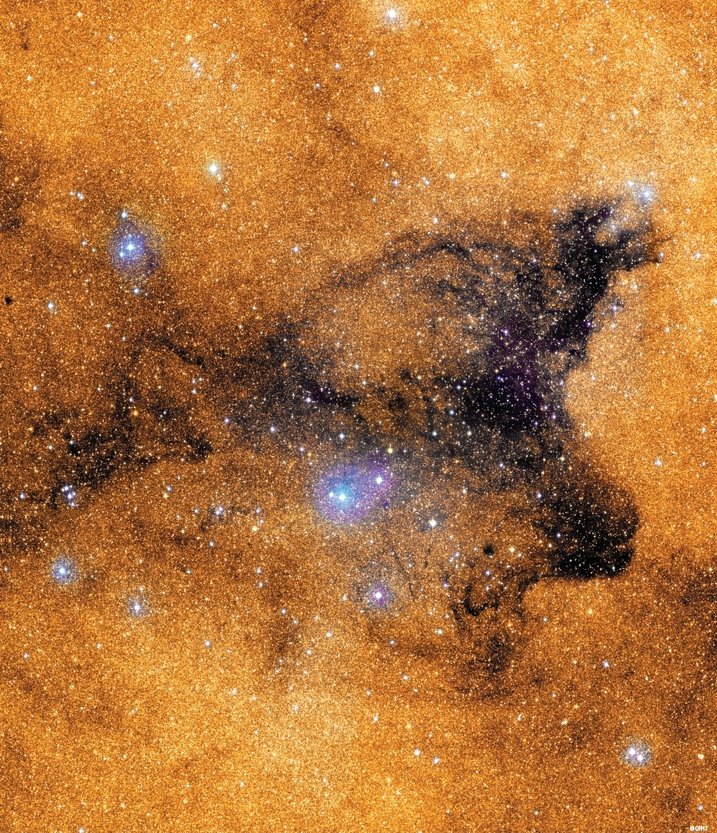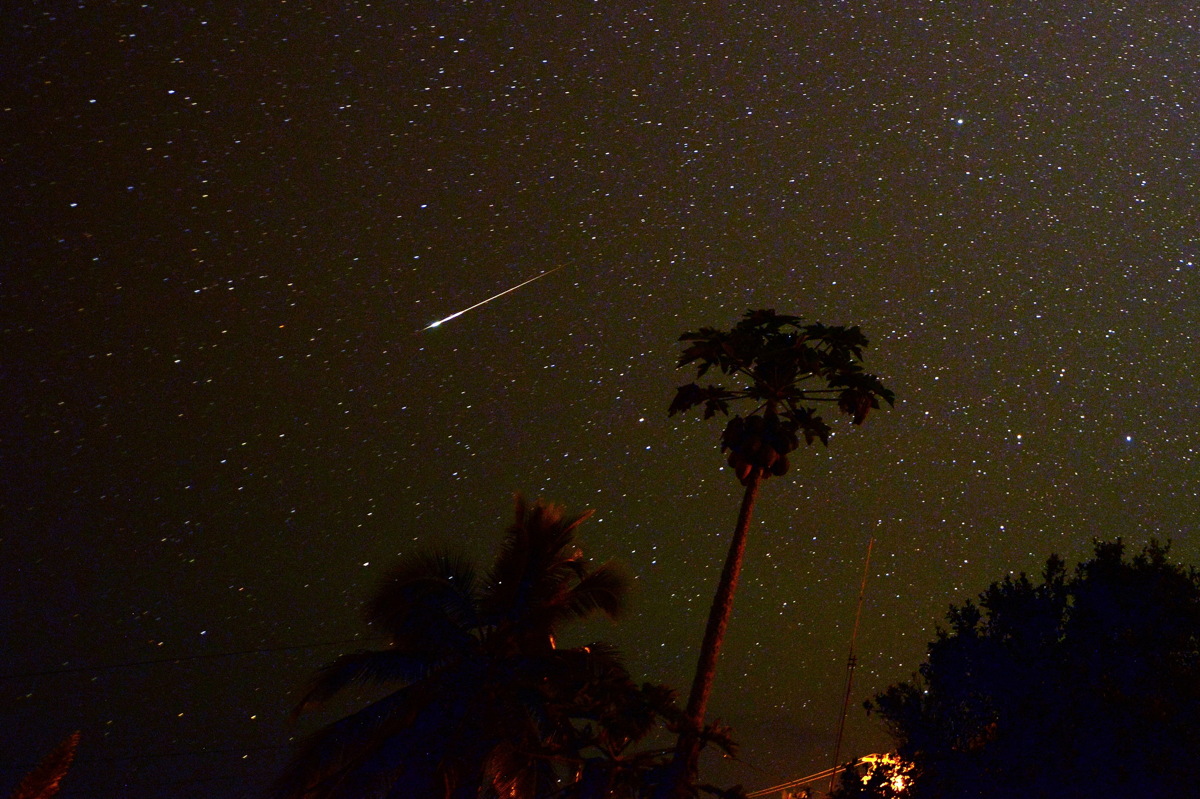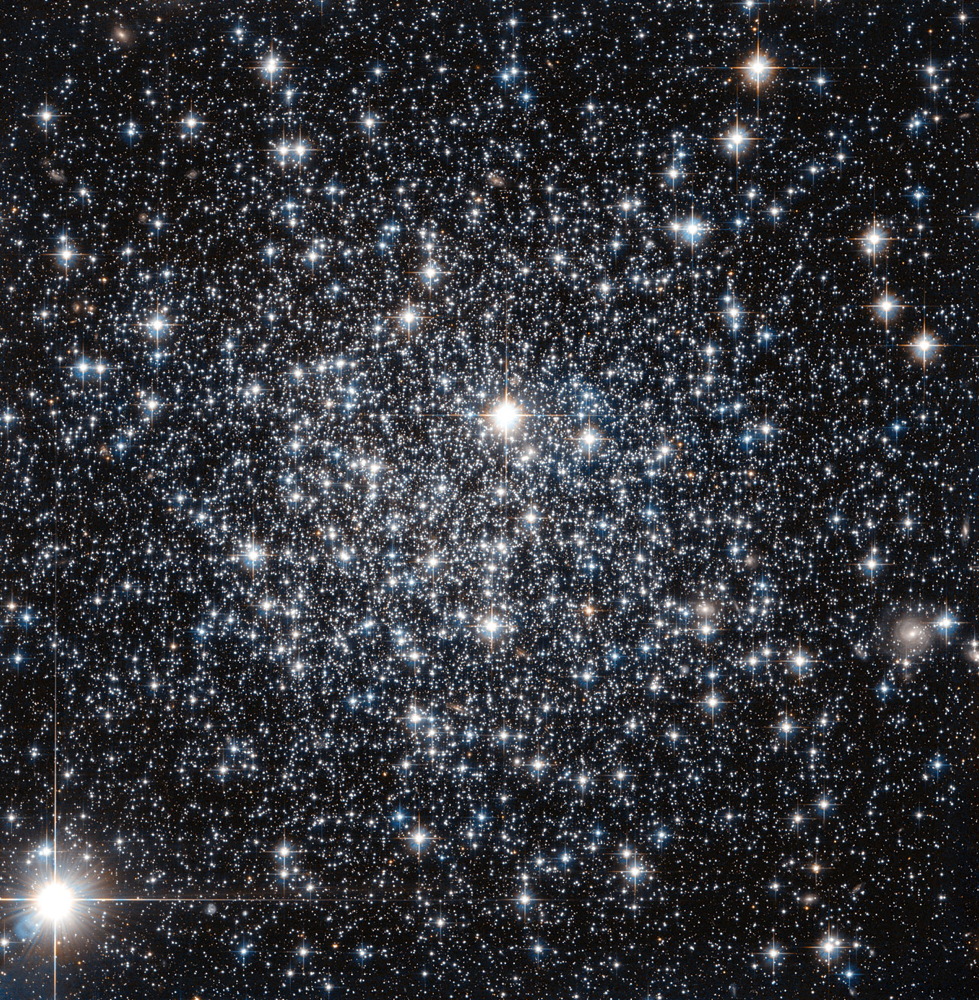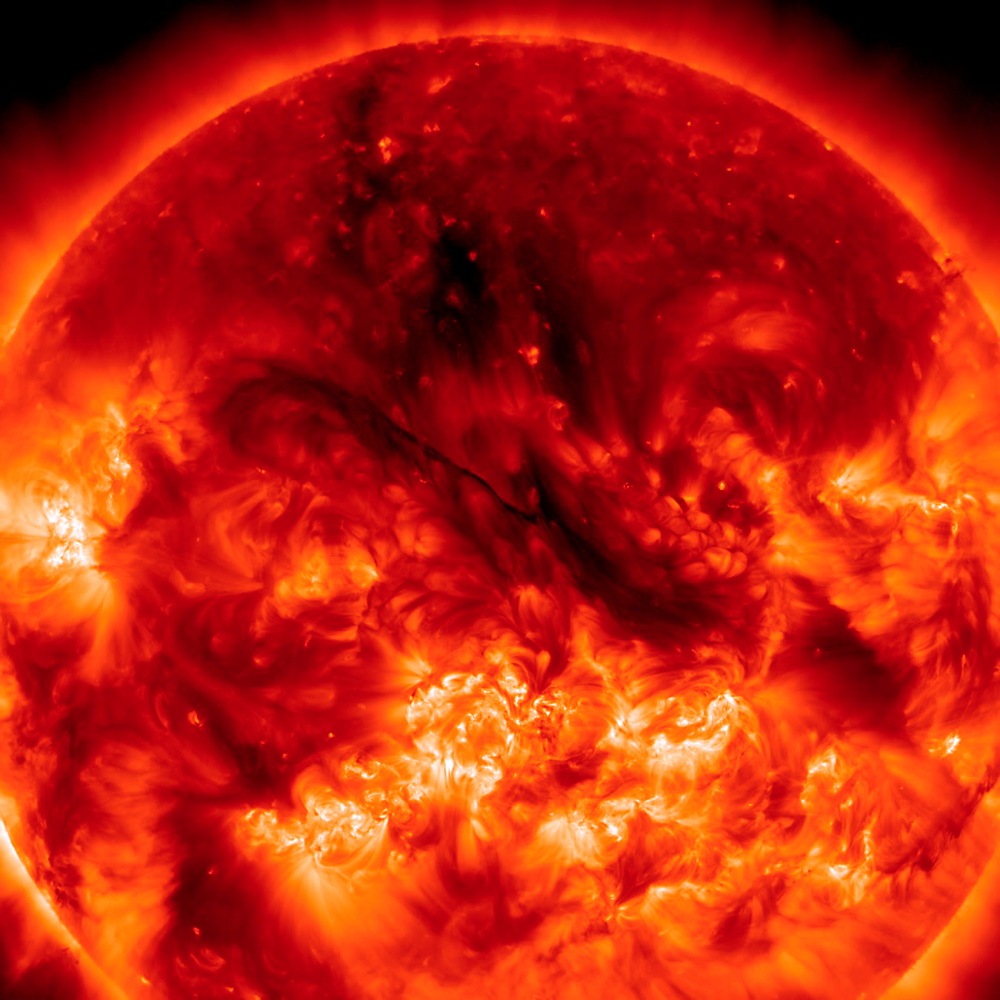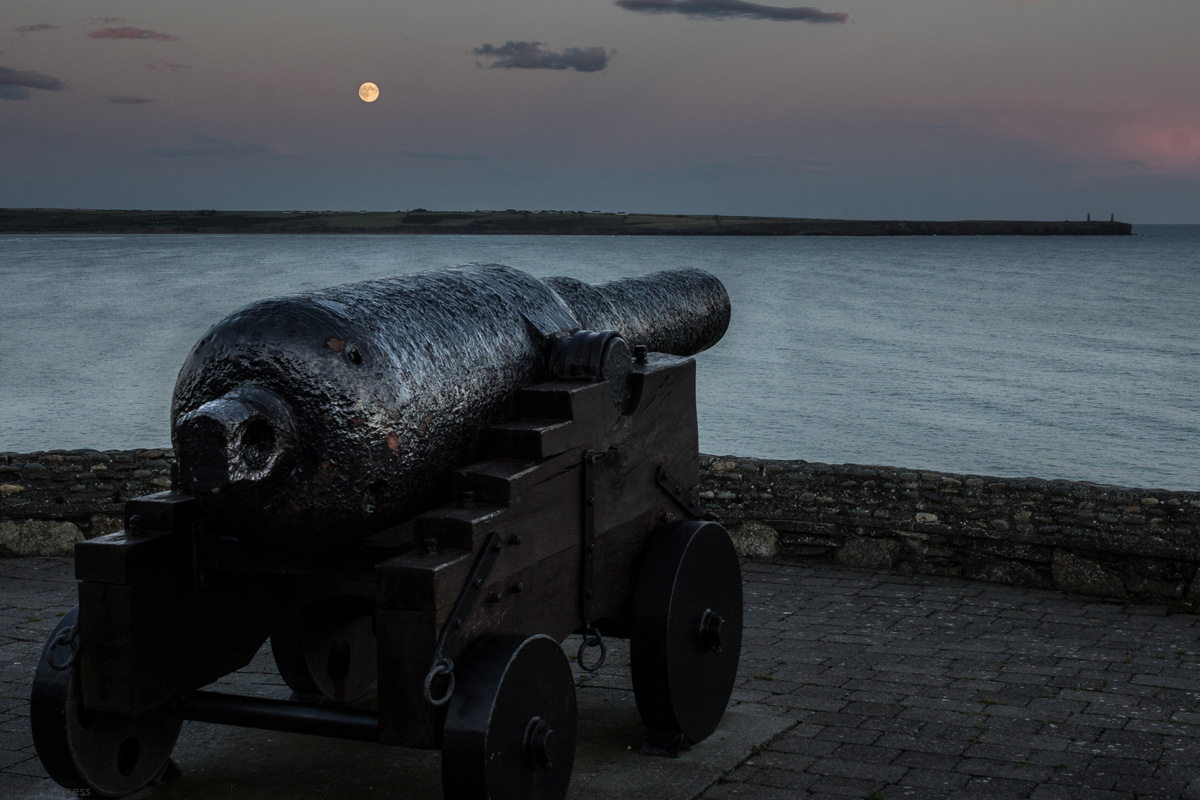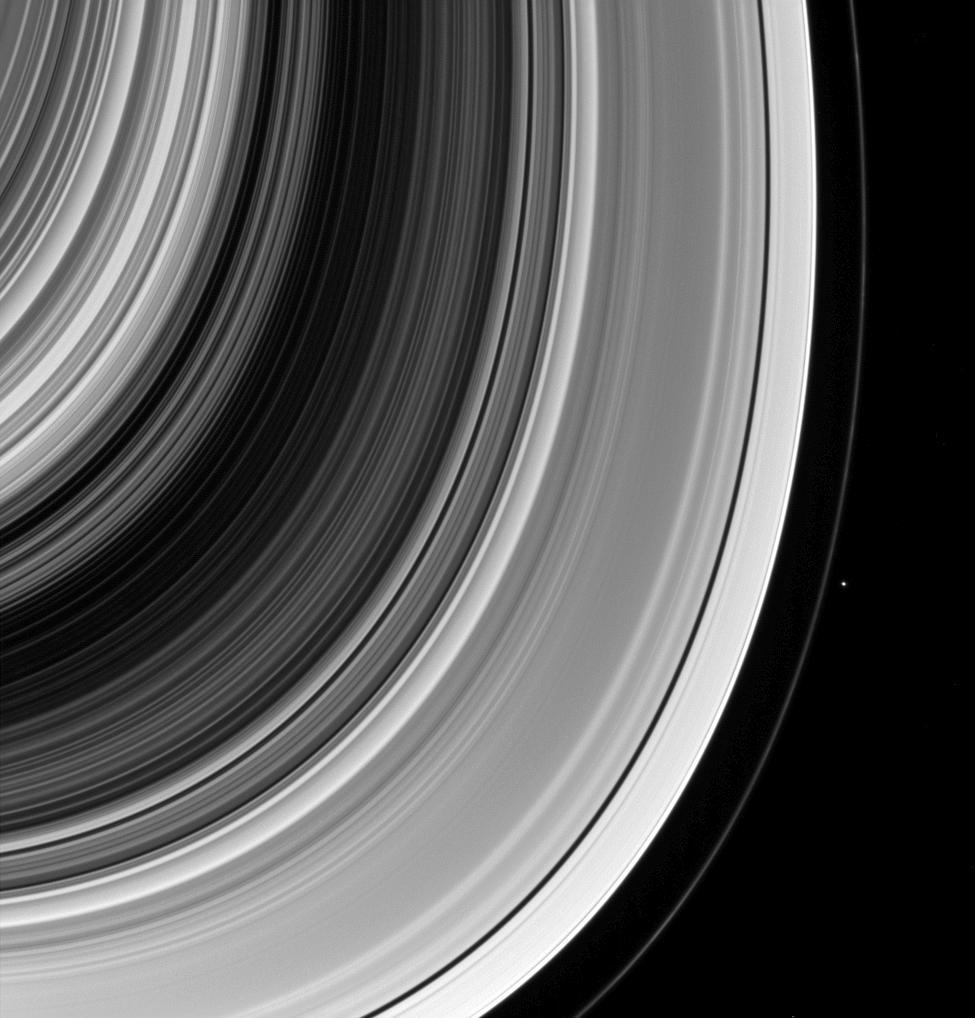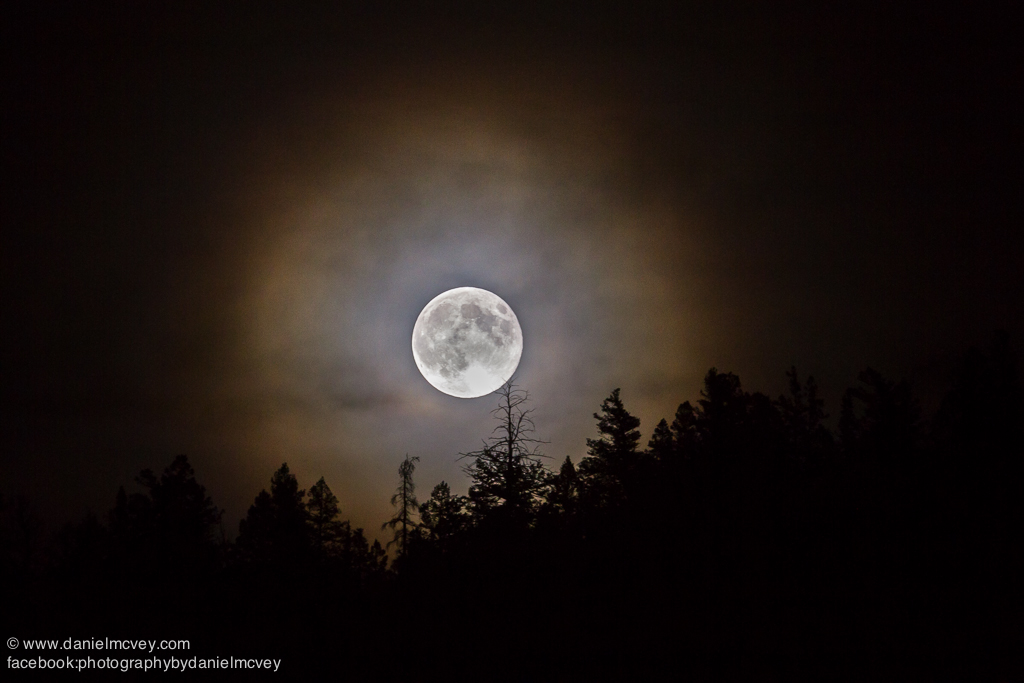Space Image of the Day Gallery (August 2014)
Image of the Day Archives
For older Image of the Day pictures, please visit the Image of the Day archives. Pictured: NGC 2467.
Look at the Center
Friday, August 1, 2014: This view toward the bulge at the center of our Milky Way galaxy shows a large, obscuring nebula in the foreground. This nebula opens just enough to show glimpses of the galactic central bulge, which contains no gas and no star formation--none, in fact, for billions of years. In general, the bulge of a spiral galaxy consists of a quasi-spherical, amorphous ball of old stars. Image released July 2014.
— Tom Chao
Cold as Frost
Monday, August 4, 2014: An image of Mars taken by the HiRISE instrument on NASA's Mars Reconnaissance Orbiter shows frost or ice (white areas) persisting in late winter only on south-facing slopes that have not received much direct sunlight. Ridges between gully alcoves receiving more light appear reddish and mostly free of frost. New gully activity is not readily detectible in this image. In some years, the frost (up to roughly 3.3 feet or 1 meter thick) triggers avalanches, although not in most years. The frost here consists of mostly carbon dioxide (dry ice), but also contains small amounts of water ice. Image released July 30, 2014.
— Tom Chao
You’re the Antenna Catching Vibration
Tuesday, August 5, 2014: Antennas of the ALMA Observatory sit on the Chajnantor Plateau in Chile, at an elevation of 16,400 ft. (5000 m.) above sea level. The Small and Large Magellanic Clouds, the closest galaxies to our galaxy, The Milky Way, glow in the sky at right. ALMA aims to observe the coldest and most ancient objects in the cosmos — known as the "cold universe." The array of antennas measures millimetre and submillimetre wavelength radiation, between infrared and radio waves in the electromagnetic spectrum. The array contains 66 configurable mobile antennas on the ALMA site to meet scientists' needs, making it the biggest astronomical experiment in existence. Image released Aug. 4, 2014.
— Tom Chao
The Closer I Get to You
Wednesday, Aug. 6, 2014: ESA's Rosetta spacecraft nears comet 67P/Churyumov-Gerasimenko in this artist’s interpretation. The spacecraft's navigation camera obtained the comet image on August 2, 2014, at a distance of about 311 miles (500 km.). The spacecraft rendering does not match the comet in scale.
— Tom Chao
Living in Paradise
Thursday, Aug. 7, 2014: Astrophotographer Jim Denny sent in a photo of a Southern Delta Aquarid meteor taken on July 30, 2014, in Kekaha, Kauai, Hawaii.
— Tom Chao
Gonna Have a Ball Tonight
Friday, Aug. 8, 2014: A new NASA/ESA Hubble Space Telescope image depicts globular cluster IC 4499. A globular cluster consists of a large ball of old stars orbiting their host galaxy. In the 1990s, the cluster first appeared to have a mystifyingly young age compared to other Milky Way globular clusers. However, since the early estimates, Hubble has provided new information showing IC 4499 has been around roughly the same amount of time as the Milky Way clusters, 12 billion years. Image released Aug. 4, 2014.
— Tom Chao
Breaking space news, the latest updates on rocket launches, skywatching events and more!
One Week
Monday, Aug. 11, 2014: A very long filament hung across the sun’s surface for over a week from July 31 to Aug. 6, 2014. The filament appears as the dark line going diagonally across the center of the sun in this image. Filaments consist of clouds of cooler gas raised above the sun’s surface by magnetic forces. Normally they exhibit a great deal of unstability and break apart in days or even hours. This image was obtained in the 191 Angstrom wavelength of extreme ultraviolet light, and has been tinted red instead of the usual brown color.
— Tom Chao
Shoot the Moon
Tuesday, Aug. 12, 2014: Astrophotographer Leah Burgess sent in a photo of the supermoon of Aug. 8, 2014, taken at Donerail, Tramore, County Waterford, Ireland rising over Brownstown Point.
— Tom Chao
Keep It Tight
Wednesday, Aug. 13, 2014: Saturn’s moon Pandora (at right center) helps shape the narrow F ring. Pandora (50 miles, or 81 kilometers across) orbits outside the F ring, while another shepherd moon Prometheus (53 miles, or 86 kilometers across), orbits inside, both helping to prevent the ring from spreading. Cassini spacecraft took the image in visible light with the wide-angle camera on March 8, 2014. Image released Aug. 11, 2014.
— Tom Chao
Ring Around the Moon
Thursday, Aug. 13, 2014: Astrophotographer Daniel McVey sent a photo of the August 2014 supermoon taken at White River National Forest in Summit County, Colorado.
— Tom Chao
